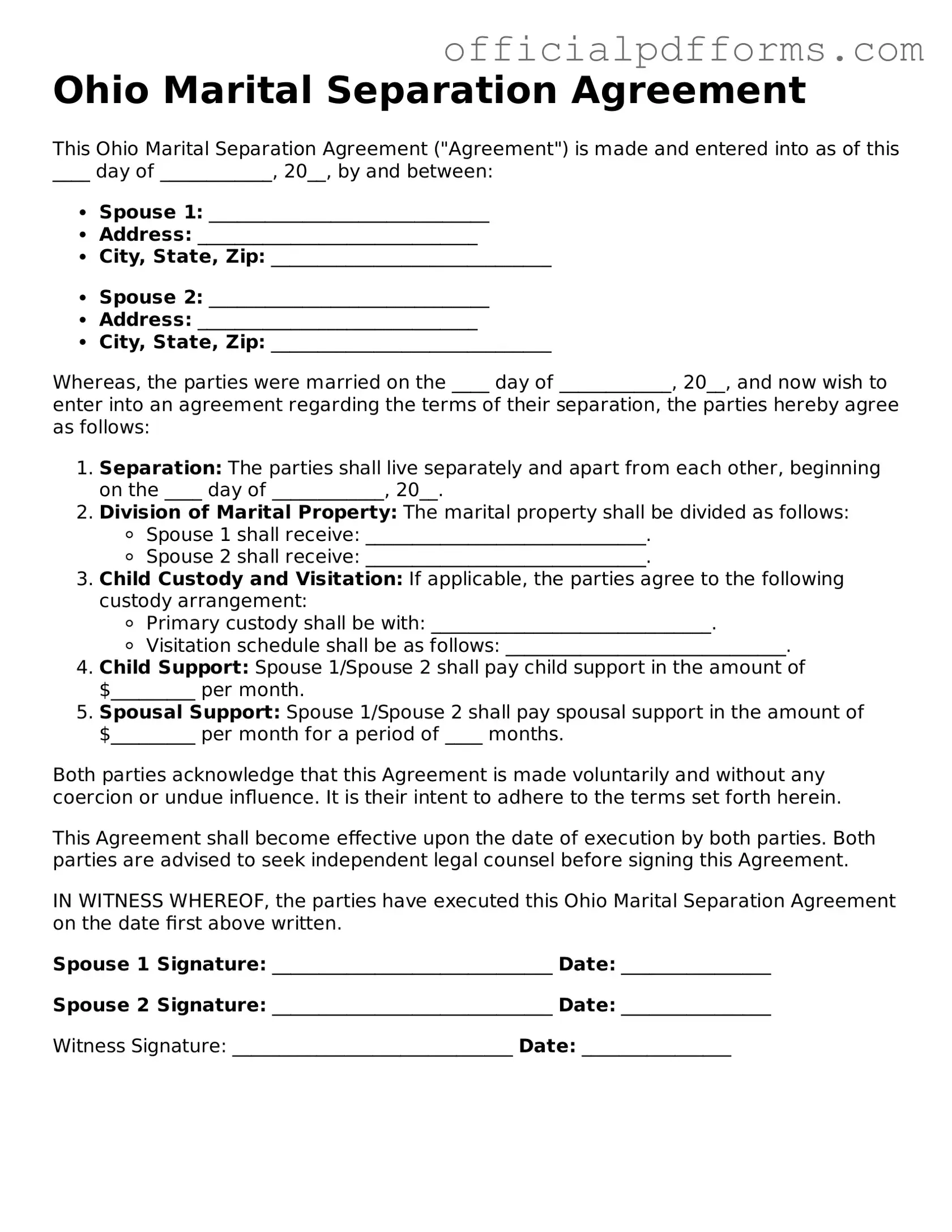What is a Marital Separation Agreement in Ohio?
A Marital Separation Agreement is a legal document that outlines the terms and conditions agreed upon by spouses who are separating but not yet divorced. This agreement can address various issues, including the division of property, child custody, child support, and spousal support. It serves as a roadmap for both parties during the separation period, helping to minimize conflicts and misunderstandings.
Do I need a lawyer to create a Marital Separation Agreement?
While it is not legally required to have a lawyer when drafting a Marital Separation Agreement in Ohio, it is highly advisable. A lawyer can provide valuable guidance, ensuring that the agreement complies with Ohio laws and adequately protects your rights. Additionally, having legal representation can help in negotiating terms that are fair and satisfactory for both parties.
What should be included in a Marital Separation Agreement?
When creating a Marital Separation Agreement, consider including the following key elements:
-
Property Division:
Specify how marital assets and debts will be divided.
-
Child Custody:
Outline the custody arrangement for any children involved.
-
Child Support:
Detail the financial support for the children, including amounts and payment schedules.
-
Spousal Support:
If applicable, include terms for alimony or spousal support.
-
Dispute Resolution:
Establish a method for resolving any disagreements that may arise in the future.
How long does a Marital Separation Agreement last?
The duration of a Marital Separation Agreement can vary based on the specific terms agreed upon by both parties. Generally, the agreement remains in effect until the couple either reconciles or finalizes their divorce. If the couple decides to proceed with a divorce, the terms of the separation agreement may be incorporated into the final divorce decree, making it enforceable by the court.
Can a Marital Separation Agreement be modified?
Yes, a Marital Separation Agreement can be modified if both parties agree to the changes. It is essential to document any modifications in writing and have both parties sign the updated agreement. In some cases, a court may also need to approve significant changes, especially if they involve child custody or support matters.
